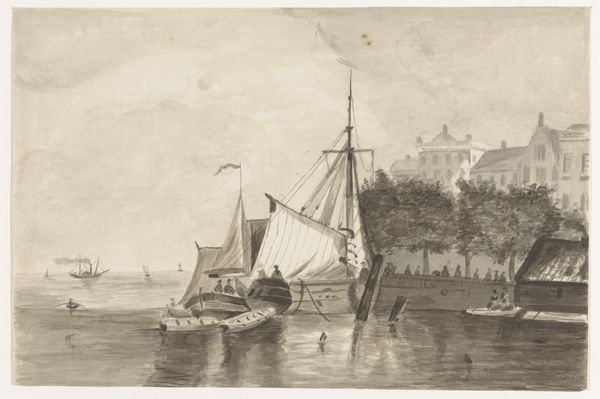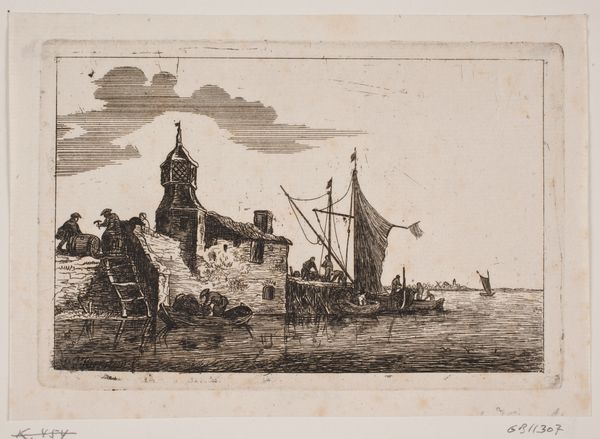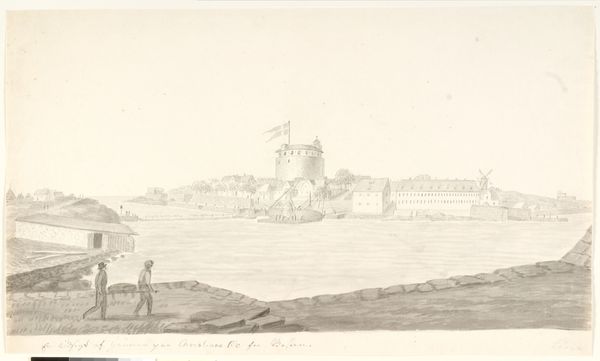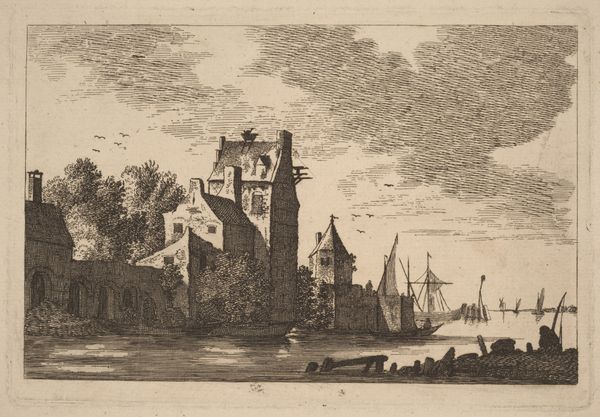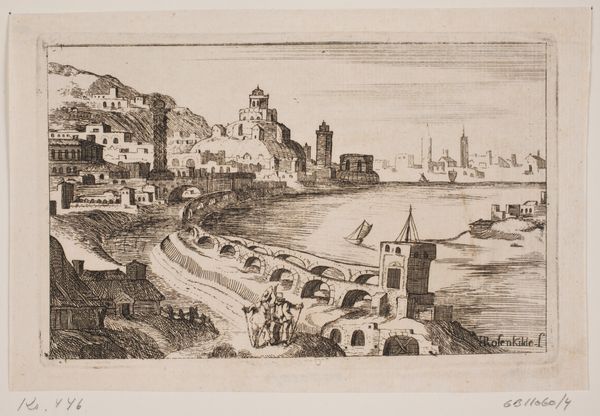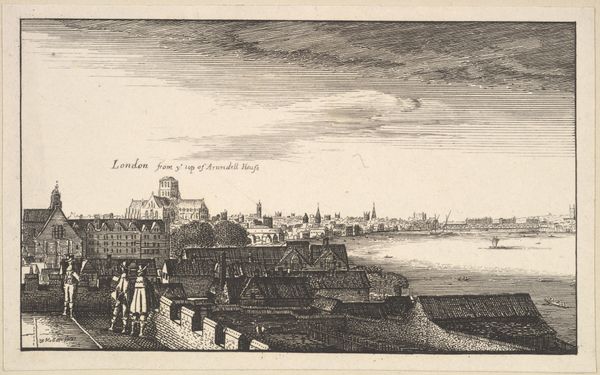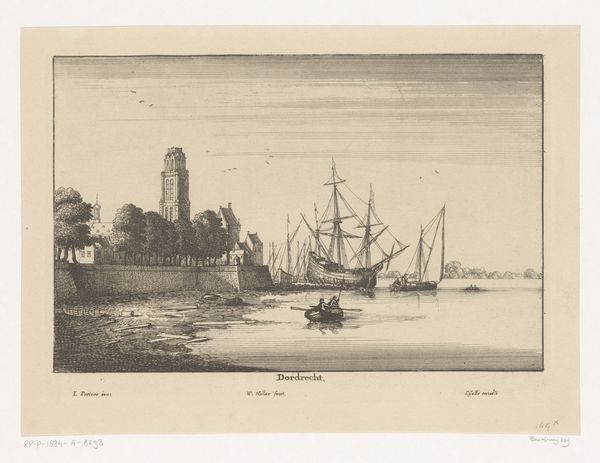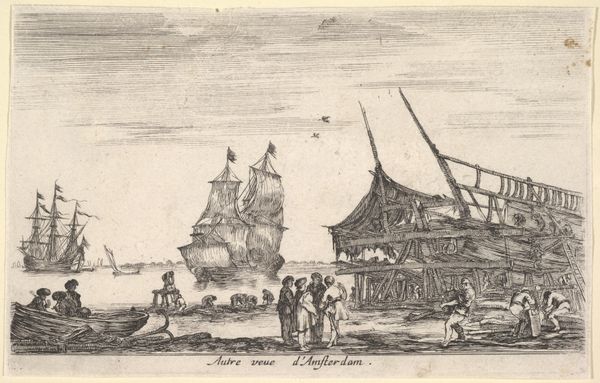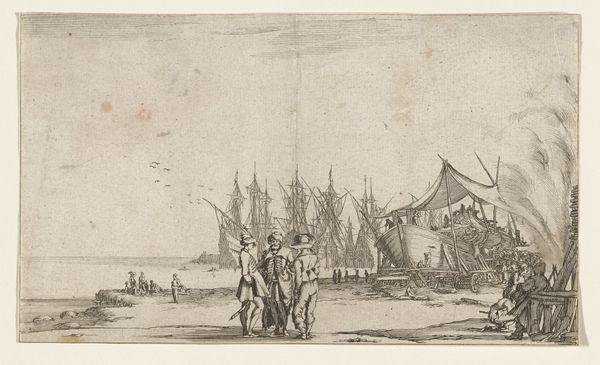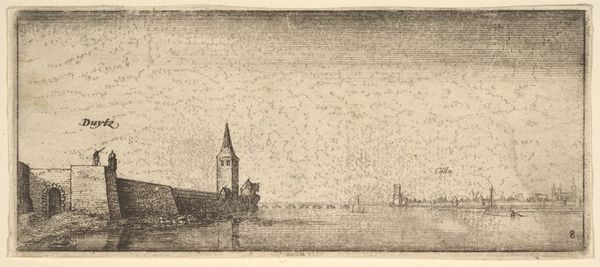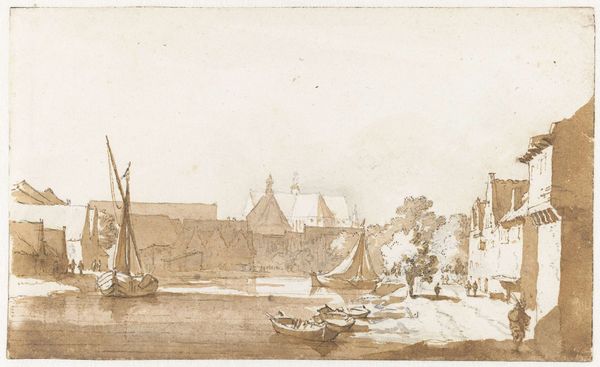
print, etching
#
baroque
# print
#
etching
#
landscape
#
etching
Copyright: National Gallery of Art: CC0 1.0
Editor: So, here we have "Church in an Inlet with Rowboat in the Foreground," a print by Franz Edmund Weirotter, done using etching. The mood feels very still, almost like time is suspended. What stands out to you in this piece? Curator: Immediately, I’m drawn to how this apparently serene landscape subtly reflects power dynamics. Consider the church, dominating the composition. Churches throughout history frequently were associated with systems of oppression, controlling knowledge and dictating social norms. Editor: That's a different way to look at it. I was focused on the boats, the people in them. Curator: The boats and the people do matter. How do their depictions juxtapose or reinforce that established power structure, the rigid architecture against human figures traveling across the inlet? Also, note how this image’s creation as a “print" situates it within discourses of dissemination, and accessibility, raising the question: accessible to whom and why? Editor: It is interesting that it's a print because that means it can be easily shared with lots of people, and could have had messages layered within it. How can that context expand my interpretation of this etching? Curator: It’s crucial to question the context surrounding art like this. Prints allowed ideas and representations, sometimes very politically charged ones, to circulate widely. Was this designed to evoke feelings of religiousity, peace, trade… Or maybe more subtle criticisms of social hierarchies? Editor: I hadn’t considered how the medium could play such a significant role in understanding the art itself. Thank you, I now see many other issues that I can consider when evaluating art in general. Curator: Absolutely! Questioning historical and societal contexts opens us to deeper readings. Never assume the surface is all there is.
Comments
No comments
Be the first to comment and join the conversation on the ultimate creative platform.

